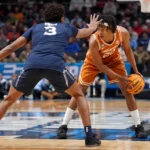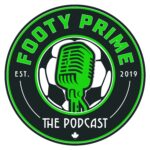
Hockey’s Greatest Rivalry: Montreal Canadiens vs Quebec Nordiques
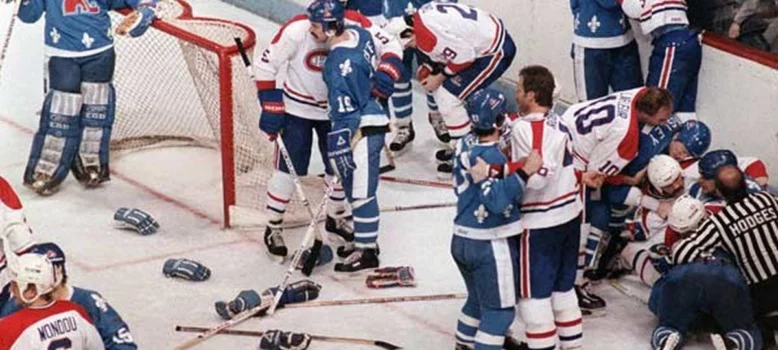
The hockey rivalry between the Montreal Canadiens and the Quebec Nordiques is one of the most storied and intense rivalries in the National Hockey League (NHL) history. The rivalry was fueled by a combination of factors, including language, politics, and cultural differences, which intensified the passionate competition between the teams and their fans.
Impact of Language and Politics
Language and politics played a significant role in shaping the Montreal Canadiens-Quebec Nordiques rivalry. Montreal, the largest city in the province of Quebec, has a predominantly French-speaking population, while Quebec City, where the Nordiques were based, has a more prominent English-speaking community. This linguistic divide created a sense of regional identity and pride, which was closely intertwined with the hockey rivalry.
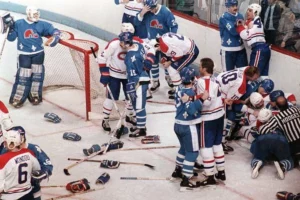
Moreover, Quebec has a long history of political tensions between Francophones and Anglophones, and these tensions have often spilled over into the realm of sports. Since their inception in 1909, the Canadiens have historically been associated with the Francophone community in the province. Because of this, the suspension of the team’s best player, Maurice Richard, led to what is now called “The Richard Riots” on 17 March 1955. This one event may be the most obvious example of that linguistic tension, and it allowed the foundation for the province’s “Quiet Revolution” to be built upon.
But when the Nordiques entered the NHL in 1980 as part of the WHA merger, that status as a symbol of French-Canadian identity and cultural heritage was challenged. While Montreal is more multicultural and bilingual, the City of Quebec on the other hand, with its unilingualism, nearly uniform population, and nationalistic fervor born of the separatist movement in the province represented a different cultural perspective within the province. Games between the two teams always led to battles between the fan bases; among them, members of the same family would be involved.
Be Careful Which Beer Brand You Order
The rivalry between the Canadiens and Nordiques extended also beyond the confines of the arena and into the daily lives of their fans. One aspect of this rivalry that was unique from any other NHL rivalry was the way fans showed their allegiance based on the beer brand they drank. Molson, a predominantly English-speaking brewery, was closely associated with the Canadiens. Fans of the Canadiens often referred to themselves as “Molson Ex fans,” indicating their support for both the team and the brewery.
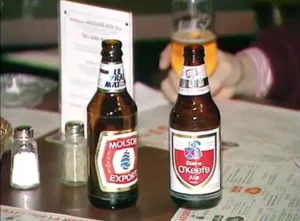
In contrast, O’Keefe, a brewery with strong ties to the Francophone community in the eastern half of the province, became synonymous with Nordiques fans. They proudly identified themselves as “O’Keefe Ale fans” demonstrating their support for the team and the brewery. This beer brand association helped to deepen the divide between the two fan bases, making it easier to identify with each other and adding an extra layer of rivalry and pride. In 1989, as if to prophesize the future loss of their franchise, the O’Keefe Brewery due to its financial situation, was forced to merge with Molson.
The Good Friday Massacre
The rivalry between the Canadiens and Nordiques reached its pinnacle in the infamous “Good Friday Massacre.” On March 20, 1984, during a playoff game between the two teams, a massive brawl erupted, resulting in one of the most violent incidents in NHL history. The game was characterized by intense physicality and heated emotions, leading to a series of fights and altercations between players from both teams.
Fun Fun Fun right now on Rogers’ Sportsnet! Game 6 1984 Playoffs Montreal Canadiens vs. Quebec Nordiques!!! (total cheap shot by Louis Sleigher on Jean Hamel) #NHLPlayoffs #hockeyrivalries #SteveShutt pic.twitter.com/q06ir4Wo6F
— Mick Kern (@expomick) November 15, 2020
The brawl, which involved nearly every player in uniform that night, lasted for several minutes, resulting in numerous injuries, penalties, and ejections. The incident shocked fans and the hockey world at large, highlighting the deep-seated animosity between the Canadiens and Nordiques. The Good Friday Massacre remains the single greatest symbol of the fierce competitiveness and intense emotions that characterized this rivalry.
No room left in the penalty box…and this doesn’t count all the players tossed out of the game. pic.twitter.com/hmarNo4W08
— Mick Kern (@expomick) November 15, 2020
The “Good Friday Massacre”, which took place on April 20, 1984, during a playoff game, was not one, but two bench-clearing brawls. The first was an intense battle, and it fueled the second because of an incident that occurred during that first battle, an injury to Jean Hamel of the Canadiens.
I can still see Jean Hamel falling on the ice. There are a lot of things that happen during a game, a lot of things that are said. The fighting wasn’t a problem; we were used to that. But everybody who was there remembers the scary sight of Jean Hamel lying on the ice and not moving. – Guy Carbonneau
The second brawl was primal, the first one paled in comparison due to the visceral hatred, it was so intense it led to actual brothers battling one another.
The Hunter Brothers Fight
One notable aspect of the second brawl was the fight between the Hunter brothers, Dale and Mark. Both Dale Hunter (playing for the Nordiques) and Mark Hunter (playing for the Canadiens) were well-known for their physical style of play and their willingness to engage in fights. As tensions flared, the Hunter brothers found themselves face-to-face on the ice.
In a dramatic and highly anticipated moment, the brothers dropped their gloves and engaged in a fierce battle, choosing to forgo any attempt at defensive postures and exchanging punches in a display of raw aggression. Their fight added to the already chaotic scene, but also captured the attention of fans and further fueled the rivalry.
The Hunter brothers’ showdown was symbolic of the deeply entrenched animosity between the two teams and exemplified the intense competitiveness and physicality that characterized the rivalry. Their fight remains an enduring image in the history of the Canadiens-Nordiques rivalry. The intensity and violence of the game drew widespread attention and criticism and provided the seeds for the anti-fighting movement in the province. It sparked debates regarding player safety, the role of physicality in hockey, and the rivalry’s place within the sport.
The choice of beer, linguistic and political divisions within Quebec added an extra layer of intensity and identity to the rivalry. Over the 15 years that these two teams played in the same division, before the Nordiques moved to Colorado in 1995, no NHL rivalry before or since was as visceral. While the rivalry was short-lived and filled with intense and memorable moments, it reached its peak in the 1984 playoffs during the Good Friday Massacre, a violent brawl that cemented this rivalry’s place in hockey lore.
